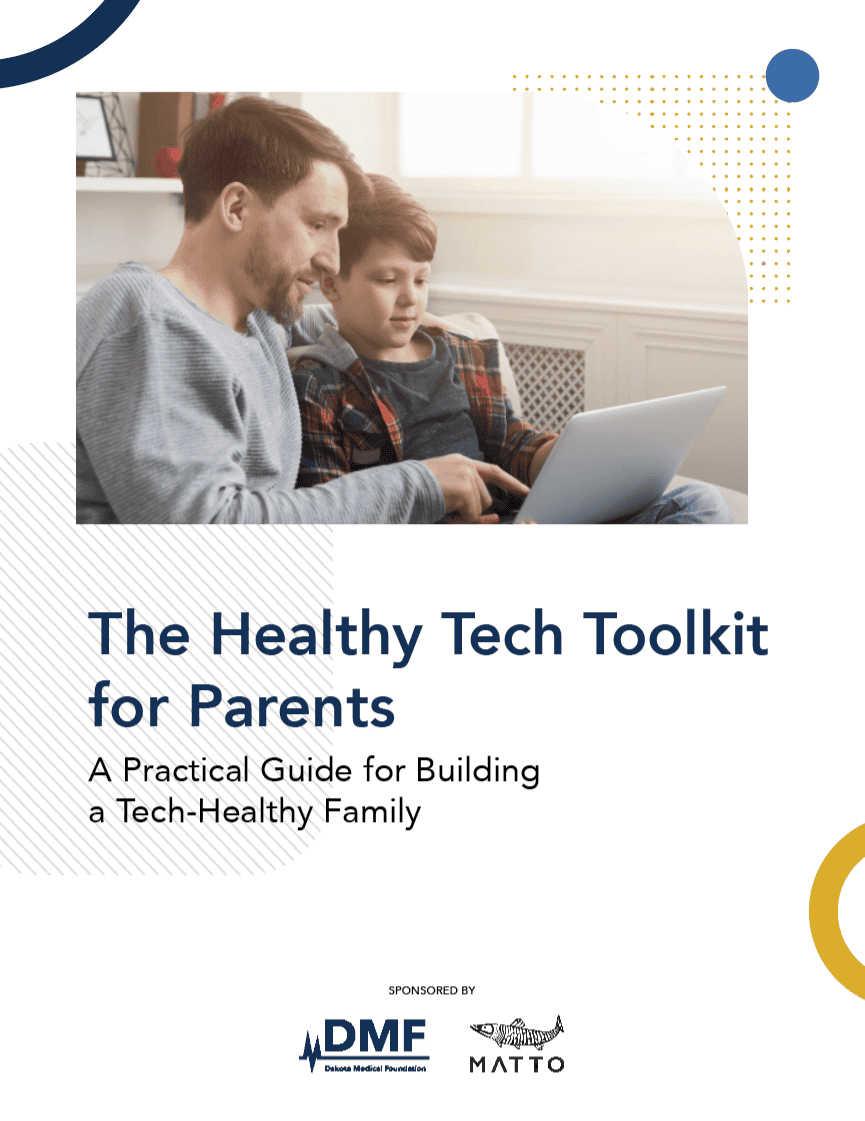About
DMF’s Healthy Technology initiative began in response to plummeting physical, mental, and emotional health indicators in both our region and across the country. When DMF convened a mental health workgroup in 2022, smartphones and social media were identified as two of the primary culprits for these declines.
In 2023, DMF and the Matto Foundation hosted a healthy-technology summit featuring Dr. Anna Lembke, a Stanford psychiatrist and the bestselling author of “Dopamine Nation.” Dr. Lembke spoke at length about how the devices we use on a daily basis have hijacked the pleasure centers of our brains and caused a negative ripple effect that impacts our sleep, diet, and exercise, among others.
Coming Soon: The Healthy Tech Toolkit for Parents

With digital addiction disproportionately affecting the development and health of kids and teens, DMF has developed — and will soon release — a toolkit that contains practical guidelines and tips to help parents navigate the challenges of a screen-based childhood.
While it won’t be available until next month, we wanted to give you a sneak preview of what to expect with the introduction to the toolkit, “Why Healthy Technology Use Matters.”
The Stats and Why It Matters
- 90 percent of the time we spend with our kids occurs by the time they turn age 18.
- The average adult spends about 70 days a year just looking at their smartphone (to say nothing of computers, tablets, and TV). That’s 1,260 days — or about three and a half years — of those 18 years that we’re glued to that little computer in our pocket.
What might seem like a harmless 20-minute email purge or half-hour Facebook scroll quickly adds up over the course of a week, month, or year. That’s real-time – time we can’t ever get back.
We could be spending this time with the most important people in our life.
— And that’s why this issue matters.
Every day, we’re fighting a battle that we probably don’t even realize we’re fighting. Multi-billion dollar companies with endless resources are doing everything they can to take from us the two most precious resources we have: our time and attention. And the tragedy is that most of us don’t even realize it.
Those same devices and apps marketed and sold under the guise of convenience, productivity, and connection often have the opposite effect. They’ve become digital pacifiers and an ever-present source of cheap dopamine hits that take us away from the things we should be focused on: reading; learning; sleep; exercise; prayer; and spending quality, distraction-free time with loved ones.
The insidiousness of this 21st-century addiction is that it doesn’t present itself the way other addictions do. The consequences of a severe alcohol or heroin addiction are obvious and impossible to ignore. What are the consequences of technology addiction? Less so. But make no mistake: They’re every bit as serious and, in some ways, even more so.
We’re also not naive. We know we can’t fully protect our children from technology — nor should we want to — but teaching them to adopt healthy attitudes and habits around it is one of the most essential roles of a parent today. From the time they can walk, our kids are surrounded by digital media. It influences how they feel, learn, think, and behave. It has become so integrated into how they grow up and grow through the world that helping them understand the effect it has on their physical, mental, and emotional well-being and setting up proper boundaries is a reality of raising this new generation of digital natives.
It’s important that everyone understands both the risks and benefits of digital media use.
When we talk openly and honestly about challenging topics, we raise young people who question, stay curious, practice self-care, and develop their own voices.
While there’s no perfect answer to the question of “How much is too much?,” we hope this toolkit provides you with some practical advice and guidelines you can follow to take steps in the right direction.
In this toolkit, you’ll find 17 best practices and tips for establishing a culture of healthy technology use within your own home, along with numerous resources, ideas for screen-free activities, and a template for creating a family media plan.
As you anticipate using this toolkit, we encourage you to keep one question in particular top of mind: What’s really important to me and my family?


